 |
A MONTHLY UPDATE ON EDUCATION, RESEARCH AND IMPACT
|
VOL. 2 / NO. 2 / FEBRUARY 2019
|

Chancellor's Message
|
| ‘Twin-Win’ Partnerships for Discovery, Innovation |
 |
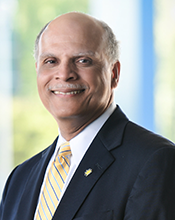 A quiet revolution is underway on college campuses, particularly at land-grant, high-research activity institutions like North Carolina Agricultural and Technical State University. A quiet revolution is underway on college campuses, particularly at land-grant, high-research activity institutions like North Carolina Agricultural and Technical State University.
At issue is the “linear model” – the scientific framework in which basic research is followed by applied research and then technology development.
A longstanding essential idea in discussions of academic and research funding and policy, it has been increasingly challenged in recent years by what is described in shorthand as the “twin-win” strategy: the idea that a combination of basic and applied science can lead simultaneously to validation of theory and development of a proven solution that can be widely shared. And that it can do so far more quickly and efficiently than the linear model.
Land-grant institutions -- for generations, the champions of applied research with practical implications for real-world challenges -- are well positioned to benefit from this changing emphasis in how we frame and fund research. The Association of Public and Land Grant Universities (APLU) is rallying support through what is becoming known as its “Public Impact-Focused Research” (PIFR) initiative.
The APLU is hardly alone. The National Academies of Science, Engineering and Medicine, for instance, is exploring and promoting this approach through member engagement, workshops and discussions accentuating the potential and promise of twin-win partnerships for discovery and innovation.
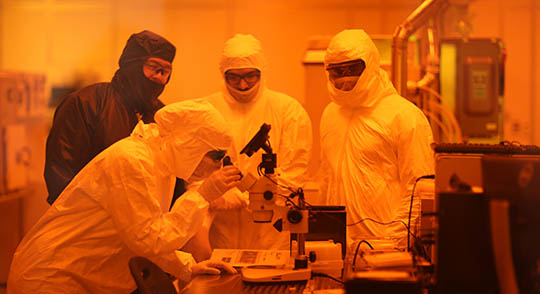 Researchers collaborate at the Joint School of Nanoscience and Nanoengineering. Researchers collaborate at the Joint School of Nanoscience and Nanoengineering.
As both a land-grant institution and one of the UNC System’s top three research universities, N.C. A&T has been moving in this direction for several years. The 2008 creation of the Joint School of Nanoscience and Nanoengineering, for instance (an academic collaboration between A&T and the University of North Carolina Greensboro), brought the knowledge of mathematical and core science from the nano world into relationship with engineering on a nano scale. The benefits from this approach continue to grow at Gateway Research Park, where the Joint School is housed.
A comprehensive, campus-wide reorganization of A&T’s academic enterprise undertaken in 2015-16 spawned three new colleges, among them the College of Science and Technology where faculty and students in the basic sciences collaborate with colleagues in areas such as our six Applied Science and Technology Ph.D. programs.
These are among many areas of our university that will be shaped by this research sea change in coming years. The convergence of basic and applied research as represented in the PIFR Initiative holds significant potential at our institution, throughout higher education and for science in general as we move more intentionally to draw innovation from discovery.
- Chancellor Harold L. Martin Sr.
|
 + To learn more about North Carolina A&T, please visit iTunes and subscribe to the On Point with Chancellor Harold L. Martin podcast. + To learn more about North Carolina A&T, please visit iTunes and subscribe to the On Point with Chancellor Harold L. Martin podcast. |
|
|

Trendline
|
| NASA Selects Homaifar for Langley Professorship |

|
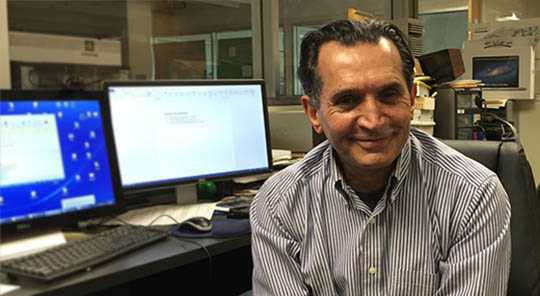
A professor in North Carolina A&T’s Department of Electrical and Computer Engineering is the newly appointed Samuel P. Langley Distinguished NASA Langley Chair Professor at the National Institute of Aerospace.
Funded by NASA’s Langley Research Center in Hampton, Va., the Langley Professorship is dedicated to an N.C. A&T faculty member who works at the institute and leads university-based research and technology thrusts of substantial interest to NASA. Dr. Abdollah Homaifar will use the position to continue his focus on development of tools for autonomous unmanned systems, bringing together top researchers to address major challenges and investigate problems of significant national interest.
The Langley Professorships were conceived and implemented by NIA’s member universities to serve as the foundation for its unique academic research program that directly supports NASA Langley. Today there are Langley professorships at NIA representing the Georgia Institute of Technology, North Carolina State University, the University of Maryland, Virginia Institute of Technology and the University of Virginia in addition to N.C. A&T.
In addition to his Langley Professorship, Homaifar serves at A&T as the Duke Energy Eminent Professor and director of the Autonomous Control and Information Technology (ACIT) Institute, which he established in 2015. He is also the director of the Testing, Evaluation, and Control of Heterogeneous Large-scale Systems of Autonomous Vehicles (TECHLAV) Center at A&T.
Homaifar’s career spans more than three decades, during which he has built a symbiotic support structure to train future engineers and leaders in the field. To date, Homaifar has graduated more than 26 Ph.D. and 90 master's students and has supported more than 300 graduate students and 1,000 undergraduate students, many of whom were students of collaborators from various departments and colleges within the university.
|
|

|
|

These Three Things
|
| A&T Launches New Centers of Excellence |

|
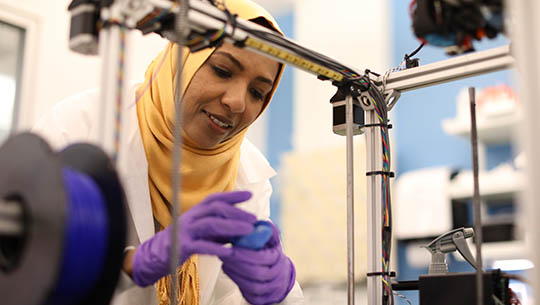
Intent on deepening its commitment to existing areas of academic success, leveraging emerging economic opportunities and addressing major societal challenges, North Carolina A&T State University this month announced the launch of three new centers of excellence – in advanced manufacturing, cybersecurity and entrepreneurship and innovation.
Interim directors have been tapped for each and will now begin work on a wide range of early deliverables, from strategic planning to development of interdisciplinary faculty advisory committees to starting to building relationships with industry.
“Each of these new initiatives build on a strong history of research and instruction at North Carolina A&T,” said interim Vice Chancellor for Research and Economic Development Sanjiv Sarin. “That tradition continues today, and under the framework of these new centers, each area is positioned for significantly greater impact in coming years.”
The new interim directors are as follows: Dr. Ajit Kelkar, Center of Advanced Manufacturing; Dr. Tonya Smith-Jackson, Center of Excellence in Cybersecurity; and Dr. Thaddeus McEwen, Center of Entrepreneurship and Innovation.
The new efforts bring the number of excellence centers to four at N.C. A&T, joining the highly regarded Center for Excellence in Post-Harvest Technologies, which had built a reputation on adding value to agricultural commodities by finding new ways to make food safer, extend shelf life and preserve health-promoting nutrients.
Note: Learn more about A&T’s new Centers of Excellence. |
|

|
|

Lab Report
|
| Cell Talk: Why Cellular Communication Matters |

|
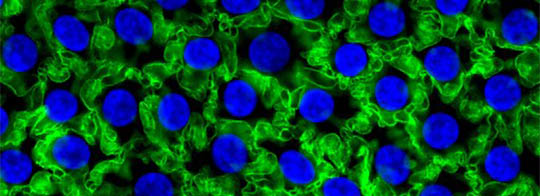 Communication takes places in the lateral membranes, highlighted in green fluorescence, of these corneal endothelial cells. Communication takes places in the lateral membranes, highlighted in green fluorescence, of these corneal endothelial cells.
Robert Newman, Ph.D., an associate professor in the N.C. A&T Department of Biology, is researching cellular signaling pathways, or how cells know what to do and when to do it. His research, focused on phosphorylation-dependent signaling pathways mediated by protein kinases and phosphatases, holds possibilities for improved treatments for diseases ranging from cancer to diabetes to heart disease.
A typical cellular signaling pathway is composed of an array of signaling molecules—including small molecule second messengers and various types of signaling enzymes, such as protein kinases and small G-proteins—acting in a coordinated fashion to process information about the cellular environment.
However, these signaling pathways do not operate in isolation. In fact, hundreds of intersecting signaling pathways are operating simultaneously to process information about both the cell’s external environment and its internal state. Moreover, the same signaling molecules are often involved in multiple cellular signaling pathways. For instance, a given signaling enzyme, such as one of the 518 protein kinases encoded in the human genome, might play a role in regulating diverse cellular processes, such as cell proliferation and programmed cell death.
A major question in the signaling field is how cells are able to selectively activate one signaling pathway while not activating another, even though key signaling molecules are shared between the two pathways. Newman’s group is exploring the hypothesis that, by modulating the substrate selectivity of protein kinases, the cell is able to control which arm of a branched pathway is activated in response to a given signal.
Newman’s research has the potential to answer fundamental questions about the regulation of cellular signaling pathways. This information can be used to develop computational models of cellular signaling pathways to predict dynamic changes in pathway properties following exposure to various physiological, pharmacological and toxicological stimuli, both in isolation and in combination.
The recipient of a $1.4 million grant from the National Institutes of Health’s National Institute of General Medical Sciences, Newman and his team hope to complement existing models of pathological oxidative stress and provide new opportunities for targeted therapies for many diseases, such as cancer, diabetes and cardiovascular disease.
|
|

|
|

Data Points
|
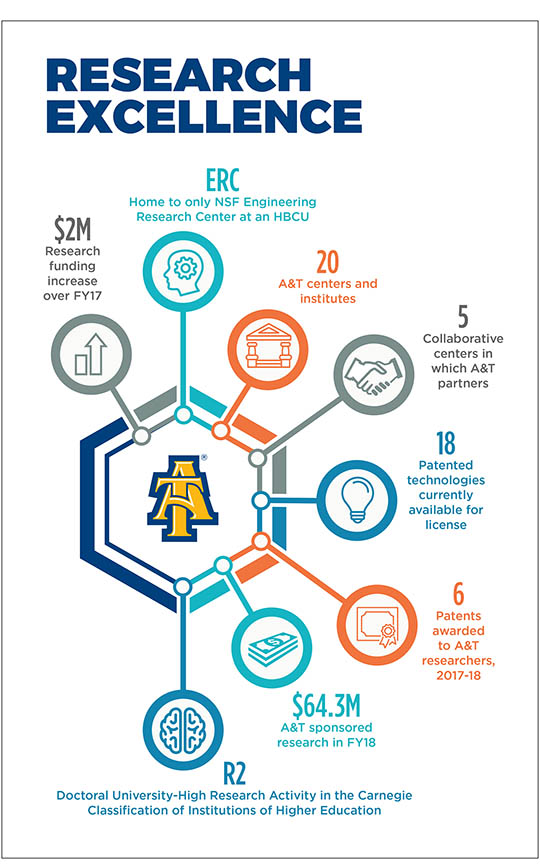
|
|
|
CHANCELLOR
Dr. Harold L. Martin Sr.
CHIEF OF STAFF
Erin Hill Hart, Interim
|
ASSOCIATE VICE CHANCELLOR
Todd Hurst Simmons
|
WEB MANAGER
Yvonne L. Halley
STAFF WRITERS
Tonya D. Dixon
Jordan M. Howse
|
|
|
 |
North Carolina Agricultural and Technical State University is a land-grant university that is ranked by the Carnegie Classification of Institutions of Higher Education as a Doctoral University: High Research Activity.
N.C. A&T does not discriminate against any person on the basis of age, color, disability, gender identity, genetic information, national origin, race, religion, sex, sexual orientation, veteran status, or any other basis protected by law. For inquiries regarding non-discrimination policies, contact the Title IX Coordinator at titleixcoordinator@ncat.edu.
N.C. A&T is an AA/EEO employer, and it is an ADA compliant institution; thus, facilities are designed to provide accessibility to individuals with physical disabilities. |
|
|
|












 A quiet revolution is underway on college campuses, particularly at land-grant, high-research activity institutions like North Carolina Agricultural and Technical State University.
A quiet revolution is underway on college campuses, particularly at land-grant, high-research activity institutions like North Carolina Agricultural and Technical State University. Researchers collaborate at the Joint School of Nanoscience and Nanoengineering.
Researchers collaborate at the Joint School of Nanoscience and Nanoengineering.


 Communication takes places in the lateral membranes, highlighted in green fluorescence, of these corneal endothelial cells.
Communication takes places in the lateral membranes, highlighted in green fluorescence, of these corneal endothelial cells.